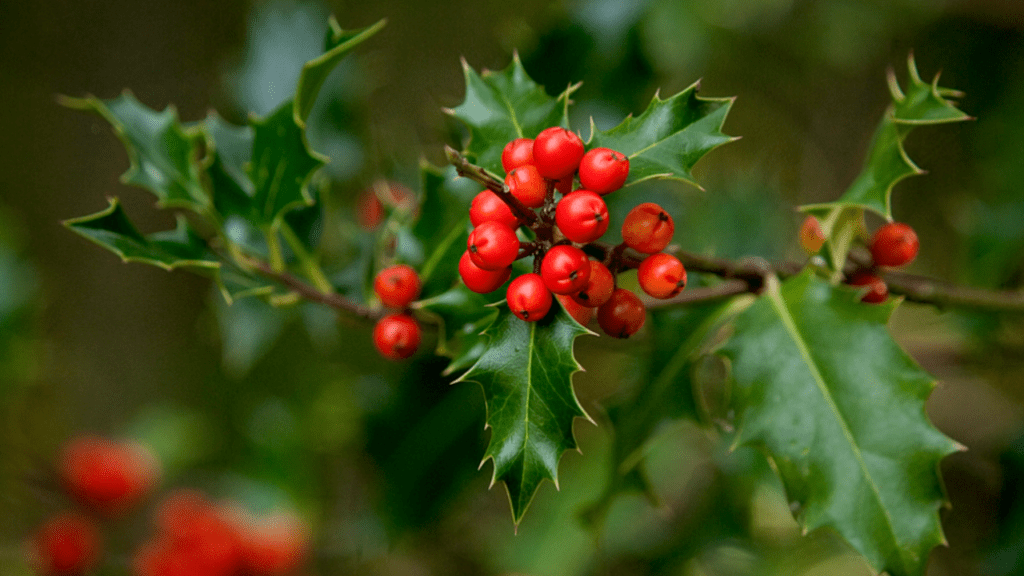
How to Grow a Healthy Ilex Aquifolium Plant in Your Garden
Growing a healthy Ilex Aquifolium plant in your garden requires a combination of proper care, attention to detail, and a little bit of know-how. This comprehensive guide will walk you through everything you need to know in order to ensure that your Ilex Aquifolium plant thrives in your garden. From soil and sunlight requirements to pruning and pest control, we’ve got you covered with all the information you need to grow a healthy and beautiful Ilex Aquifolium plant.
Table of Contents
ToggleOverview of Ilex Aquifolium
Ilex Aquifolium, also known as English holly, is an evergreen shrub or small tree that is known for its glossy, spiky leaves and bright red berries. It is a popular choice for gardens, especially during the holiday season, due to its festive appearance. Ilex Aquifolium is native to Western and Southern Europe, Northwest Africa, and Southwest Asia.
This plant prefers moist, well-drained soil and partial to full sunlight. It is important to make sure the soil is not waterlogged, as this can lead to root rot. Ilex Aquifolium also benefits from a layer of mulch to help retain moisture.
When it comes to pruning, it is best to do so in the late winter or early spring, before new growth begins. This will help to maintain the shape of the plant and promote healthy growth.
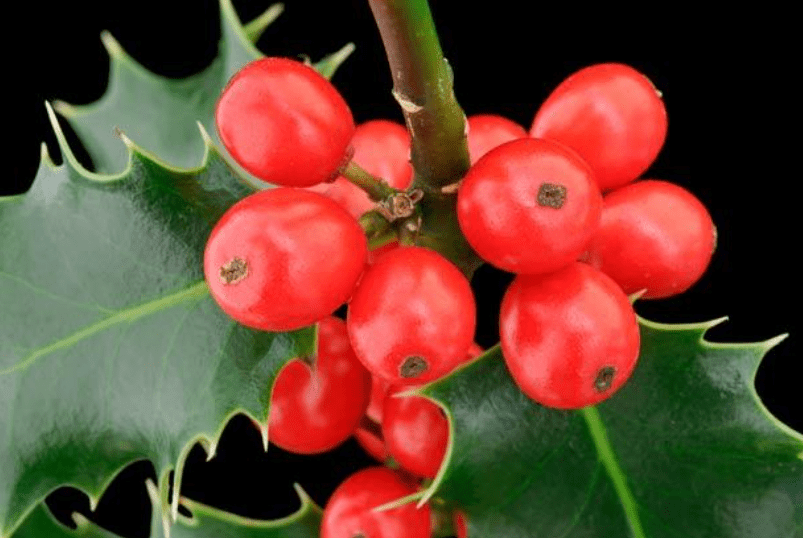
Pest control is essential for keeping your Ilex Aquifolium plant healthy. Keep an eye out for common garden pests such as aphids, scale insects, and spider mites, and treat them promptly to prevent damage to the plant.
By following these tips and giving your Ilex Aquifolium plant the care it needs, you can enjoy a beautiful and thriving addition to your garden.
Benefits of Growing Ilex Aquifolium in Your Garden
Aesthetic Appeal (year-round interest, foliage, and berries)
Ilex Aquifolium, also known as English Holly, is a beautiful and versatile evergreen plant that can add year-round interest to any garden. It features glossy, dark green foliage and bright red berries, making it a visually appealing addition to your outdoor space. The foliage and berries can also be used for festive holiday decorations, adding an extra touch of beauty to your home during the winter season.
In addition to its aesthetic appeal, Ilex Aquifolium is also a low-maintenance plant that can thrive in a variety of soil and light conditions. It is tolerant of both sun and shade, making it a versatile option for different areas of your garden. Its evergreen nature means that it will maintain its beautiful foliage throughout the year, providing a constant source of visual interest.
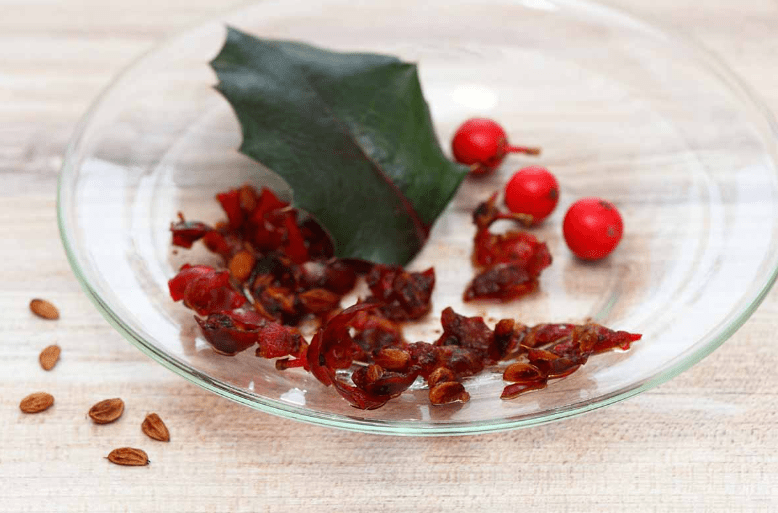
When caring for Ilex Aquifolium, it is important to make sure that the soil is well-draining and not waterlogged, as this can lead to root rot. Adding a layer of mulch can help retain moisture and promote healthy growth. In terms of pruning, it is best to do so in the late winter or early spring before new growth begins, to maintain the plant’s shape and promote healthy growth.
Pest control is also essential for keeping your Ilex Aquifolium plant healthy. Keep an eye out for common garden pests such as aphids, scale insects, and spider mites, and treat them promptly to prevent damage to the plant.
Overall, growing Ilex Aquifolium in your garden can provide both aesthetic appeal and low-maintenance beauty year-round. With proper care and attention, you can enjoy the visual interest, foliage, and berries that this plant has to offer.
Wildlife Attraction (birds and pollinators)
Ilex Aquifolium, also known as English Holly, is a popular plant for attracting wildlife such as birds and pollinators. Its vibrant red berries provide a food source for birds during the winter months, making it a great addition to any garden for wildlife attraction. Additionally, the flowers of the Ilex Aquifolium attract pollinators such as bees and butterflies, adding to the biodiversity of your garden. By planting and caring for Ilex Aquifolium, you can create a welcoming environment for wildlife and contribute to the overall ecosystem in your area. It’s a great way to add beauty to your garden while also supporting local wildlife populations.
Versatility in Landscaping (hedges, privacy screens, ornamental trees)
Ilex Aquifolium, or English Holly, is a versatile plant that can be used in various ways in landscaping. It can be trimmed and shaped into hedges or privacy screens, providing a natural and attractive barrier in your garden. Additionally, it can be grown as an ornamental tree, adding visual interest and beauty to your outdoor space. Its evergreen foliage and vibrant berries make it a great choice for adding structure and color to your landscape throughout the year. Whether you’re looking for a formal hedge, a natural privacy screen, or a decorative tree, Ilex Aquifolium can meet your landscaping needs. Its adaptability and low-maintenance nature make it a popular choice for many gardeners.
Choosing the Right Variety of Ilex Aquifolium
Popular Varieties (e.g., ‘Argentea Marginata,’ ‘J.C. van Tol’)
English Holly, or Ilex Aquifolium, is a popular choice for landscaping due to its versatility. There are several popular varieties, such as ‘Argentea Marginata’ and ‘J.C. van Tol,’ each with its own unique characteristics and appeal. These varieties offer different foliage colors and berry sizes, allowing you to choose the one that best suits your aesthetic preferences. When it comes to landscaping, English Holly can be used in a variety of ways. It can be trimmed and shaped into hedges, providing a formal and attractive boundary for your garden. It can also be used as a privacy screen, creating a natural barrier that adds both beauty and functionality to your outdoor space. Additionally, English Holly can be grown as an ornamental tree, adding visual interest and structure to your landscape. Its evergreen foliage and vibrant berries make it a great choice for adding color and texture throughout the year. With its adaptability and ease of maintenance, Ilex Aquifolium is a popular and versatile choice for landscaping projects.

Factors to Consider (berry color, size, growth rate)
When it comes to choosing the right variety of English Holly for your landscaping needs, there are a few factors to consider. These varieties offer different foliage colors and berry sizes, allowing you to choose the one that best suits your aesthetic preferences. Additionally, it’s important to consider the growth rate of the plant to ensure that it fits within your desired timeline for landscaping projects. When it comes to landscaping, English Holly can be used in a variety of ways. It can be trimmed and shaped into hedges, providing a formal and attractive boundary for your garden. It can also be used as a privacy screen, creating a natural barrier that adds both beauty and functionality to your outdoor space. Additionally, English Holly can be grown as an ornamental tree, adding visual interest and structure to your landscape. Its evergreen foliage and vibrant berries make it a great choice for adding color and texture throughout the year. With its adaptability and ease of maintenance, Ilex Aquifolium is a popular and versatile choice for landscaping projects.
Best Varieties for Different Garden Settings
When it comes to choosing the best varieties for different garden settings, it’s important to consider the specific needs of your outdoor space. For areas that require a formal and attractive boundary, English Holly is a great choice. It can be trimmed and shaped into hedges, providing a classic and beautiful border for your garden. This versatile plant can also be used as a privacy screen, creating a natural barrier that adds both aesthetic appeal and practical function to your outdoor space. In addition, English Holly can be grown as an ornamental tree, adding visual interest and structure to your landscape. Its evergreen foliage and vibrant berries make it a great choice for adding color and texture throughout the year. With its adaptability and ease of maintenance, Ilex Aquifolium is a popular and versatile choice for landscaping projects. It’s important to also consider the growth rate of the plant to ensure that it fits within your desired timeline for landscaping projects. By choosing the right varieties for your garden setting, you can create a beautiful and functional outdoor space that meets your specific needs.
Ideal Growing Conditions for Ilex Aquifolium
Soil Requirements (type, pH, and drainage)
English Holly, or Ilex Aquifolium, is a versatile plant that can thrive in a variety of soil conditions. It prefers well-drained soil and can tolerate a range of pH levels, making it adaptable to different garden settings. It can also thrive in sandy or loamy soil, as long as it is well-drained. When planting English Holly, it’s important to ensure that the soil is not waterlogged, as this can lead to root rot and other issues. Overall, English Holly is a resilient plant that can thrive in a variety of soil conditions, making it a great choice for landscaping projects.
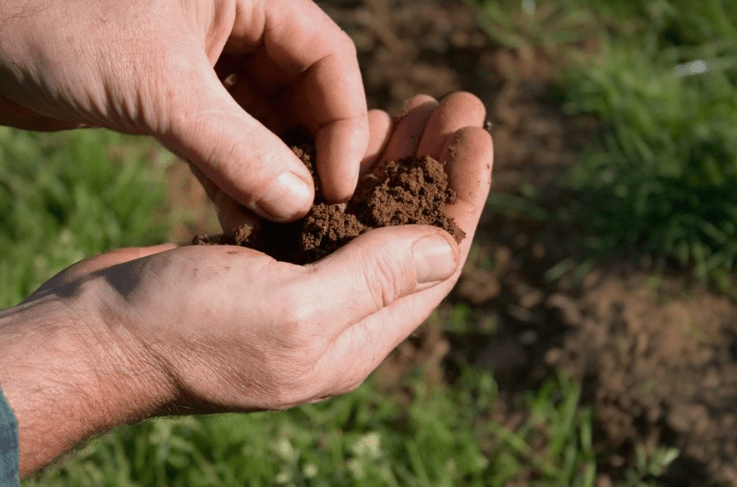
Sunlight Preferences (full sun to partial shade)
Ilex Aquifolium, also known as English Holly, is a versatile plant that can thrive in a variety of sunlight conditions. It prefers full sun to partial shade, making it adaptable to different garden settings. This means that you can plant it in areas that receive direct sunlight for most of the day, or in areas that are shaded for part of the day. This flexibility in sunlight preferences makes English Holly a great choice for landscaping projects, as it can be used in a variety of outdoor spaces to add beauty and greenery. When choosing plants for your garden, it’s important to consider their sunlight preferences to ensure they will thrive in your specific outdoor environment.
Watering Needs (frequency, drought tolerance)
Ilex Aquifolium, also known as English Holly, has specific watering needs that should be taken into consideration when planting. It is important to water the plant regularly, especially during the first year after planting, to help establish a strong root system. However, once established, English Holly is relatively drought-tolerant and can withstand periods of dry weather. It is important to monitor the soil moisture and water as needed, especially during hot and dry periods. Overwatering should be avoided, as English Holly does not thrive in waterlogged soil. Adjusting the watering frequency based on the weather conditions and the plant’s specific needs is key to ensuring its health and growth. With proper care and attention to its watering needs, English Holly can thrive and add beauty to any outdoor space.
How to Plant Ilex Aquifolium in Your Garden
Best Time to Plant (seasonal considerations)
The best time to plant Ilex Aquifolium, or English Holly, is in the fall or early spring. Planting during these seasons allows the root system to establish itself before the hot summer months or the freezing winter temperatures. It is important to choose a location with well-draining soil and partial to full sunlight for optimal growth. When planting, make sure to dig a hole that is twice as wide as the root ball and at the same depth. Gently place the plant in the hole, backfill with soil, and water thoroughly. Mulching around the base of the plant can help retain moisture and regulate soil temperature. With the right planting time and proper care, English Holly can thrive and enhance the beauty of your garden.
Site Selection and Soil Preparation
are crucial steps in planting Ilex Aquifolium, also known as English Holly, in your garden. When selecting a site for planting, it is important to choose a location with well-draining soil and partial to full sunlight for optimal growth. English Holly can tolerate a variety of soil types, but it prefers slightly acidic soil. Conduct a soil test to determine if any amendments are necessary before planting.
Before planting, it is essential to prepare the soil by clearing the area of any weeds or debris. Dig a hole that is twice as wide as the root ball and at the same depth. This will provide ample space for the roots to grow and establish themselves. Mix some organic matter, such as compost or peat moss, into the soil to improve its texture and fertility.
The best time to plant Ilex Aquifolium is in the fall or early spring. Planting during these seasons allows the root system to establish itself before the hot summer months or the freezing winter temperatures. Once the plant is in the ground, water it thoroughly to help settle the soil and remove any air pockets around the roots. Apply a layer of mulch around the base of the plant to help retain moisture and regulate soil temperature.
By carefully selecting a site with the right soil conditions and properly preparing the soil, you can ensure the successful growth of Ilex Aquifolium in your garden. With the right planting time and proper care, English Holly can thrive and enhance the beauty of your outdoor space.
Step-by-Step Planting Instructions
- Choose a suitable location for planting the Ilex Aquifolium, also known as English Holly. It prefers well-drained soil and partial to full sunlight.
- Prepare the soil by mixing in organic matter, such as compost or peat moss, to improve its texture and fertility.
- The best time to plant Ilex Aquifolium is in the fall or early spring. Planting during these seasons allows the root system to establish itself before the hot summer months or the freezing winter temperatures.
- Dig a hole that is slightly larger than the root ball of the plant. Gently remove the plant from its container and place it in the hole, making sure that the top of the root ball is level with the soil surface.
- Backfill the hole with soil, gently patting it down to remove any air pockets. Water the plant thoroughly to help settle the soil around the roots.
- Apply a layer of mulch around the base of the plant to help retain moisture and regulate soil temperature. This will also help to control weeds and protect the roots from extreme temperatures.
- Water the plant regularly, especially during dry periods, to keep the soil consistently moist but not waterlogged.
By following these step-by-step planting instructions and providing proper care, you can ensure the successful growth of Ilex Aquifolium in your garden, adding beauty and interest to your outdoor space.
Care Tips for a Healthy Ilex Aquifolium Plant
Fertilization Schedule (types of fertilizers, application frequency)
To ensure the healthy growth of your Ilex Aquifolium plant, it’s important to follow a fertilization schedule. There are different types of fertilizers that you can use, such as a balanced fertilizer or one specifically formulated for evergreen plants. It’s recommended to fertilize your Ilex Aquifolium plant in the early spring, just as new growth is beginning, and then again in the late spring or early summer. Be sure to follow the instructions on the fertilizer package for the proper application frequency and amount. This will help provide your plant with the nutrients it needs for strong, healthy growth. Remember to water the plant after fertilizing to help the nutrients reach the roots. By following a regular fertilization schedule, you can help your Ilex Aquifolium plant thrive and enhance the beauty of your outdoor space.
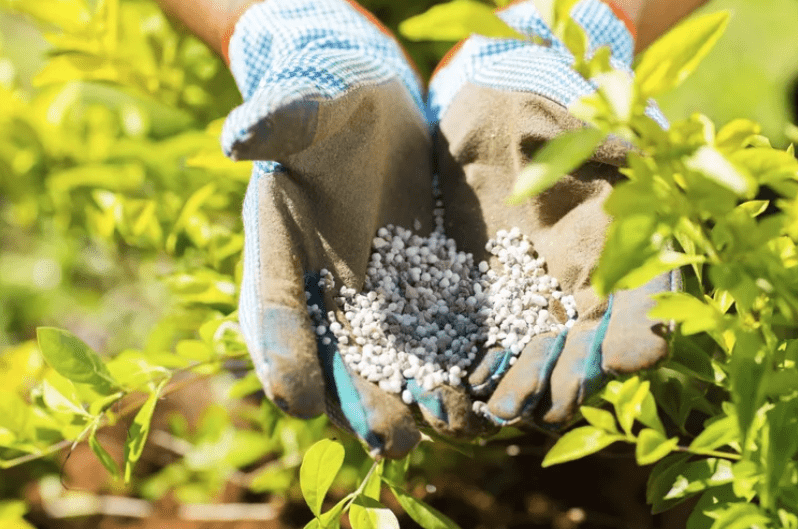
Pruning Techniques (when and how to prune for shape and health)
Pruning is an important aspect of caring for your Ilex Aquifolium plant to maintain its shape and promote its overall health. It’s best to prune your plant in the late winter or early spring before new growth begins. This is the ideal time to prune because the plant is dormant and won’t be stressed by the pruning process. When pruning, it’s important to remove any dead, damaged, or diseased branches to promote the plant’s health. Additionally, you can prune for shape by cutting back any overly long or straggly branches to maintain a neat and tidy appearance. It’s important to use sharp, clean pruning shears to make clean cuts and minimize the risk of infection. Be mindful not to over-prune, as this can stress the plant. By following these pruning techniques, you can help your Ilex Aquifolium plant to maintain its shape and overall health for years to come.
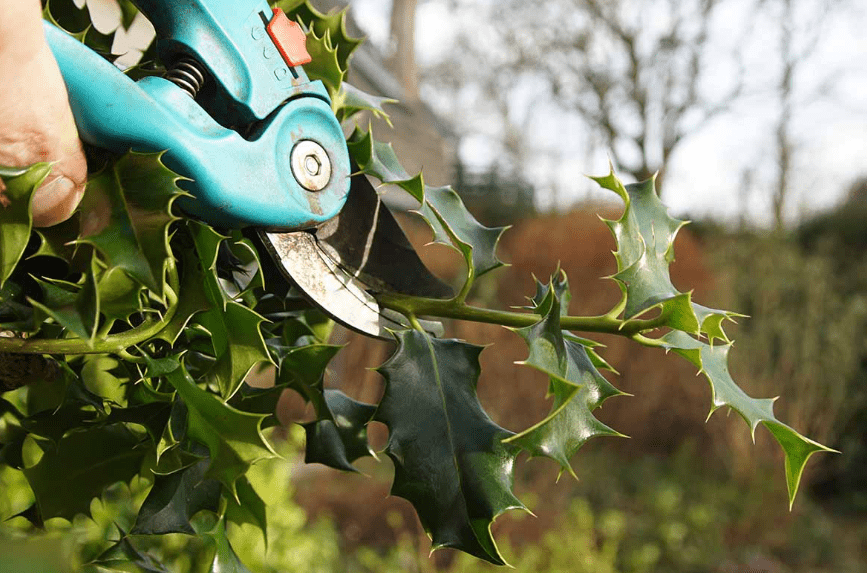
Mulching and Soil Care
Are important aspects of maintaining a healthy garden. Mulching helps to retain moisture in the soil, suppresses weeds, and adds nutrients to the soil as it breaks down. It’s best to apply a layer of mulch around plants in the spring to help conserve moisture during the hotter months. When it comes to soil care, it’s important to regularly check the pH levels and nutrient content of the soil to ensure it is suitable for plant growth. Adding organic matter, such as compost or manure, can help improve the soil structure and fertility. Additionally, aerating the soil and avoiding compaction can promote healthy root growth. By taking care of the soil and using mulch, you can create a healthy environment for your plants to thrive.
Propagation Methods
Are essential for increasing the number of plants in your garden or landscape. There are several different methods of propagation, including seed propagation, division, cuttings, and layering. Seed propagation is the process of growing plants from seeds and is a common method for annuals, biennials, and some perennials. Division involves separating plants into smaller sections, each with its own roots, and is commonly used for perennials and grasses. Cuttings involve taking a piece of a plant, such as a stem or leaf, and encouraging it to grow roots and become a new plant. Layering is a method where a stem is placed in contact with the soil and allowed to root before being separated from the parent plant. Each propagation method has its own benefits and is suitable for different types of plants. By using these methods, you can expand your garden and create new plants to enjoy.
Seasonal Care for Ilex Aquifolium
Ilex Aquifolium, also known as English Holly, is a popular evergreen shrub that requires some specific care throughout the year. In the spring, it is important to prune the plant to maintain its shape and size. It is also a good time to apply a balanced fertilizer to promote healthy growth. In the summer, it is crucial to water the plant regularly, especially during dry periods, to prevent the soil from drying out. In the fall, you can apply a layer of mulch around the base of the plant to protect the roots during the winter months. In the winter, it is important to protect the plant from harsh winds and heavy snow by providing some shelter. By following these seasonal care guidelines, you can ensure that your Ilex Aquifolium remains healthy and vibrant throughout the year.
Common Problems and Solutions
Yellowing Leaves or Poor Growth
One common problem with Ilex Aquifolium, or English Holly, is yellowing leaves or poor growth. This could be caused by a few different factors, including inadequate sunlight, poor soil nutrition, or water stress. To address this issue, try to ensure that the plant is receiving adequate sunlight, at least six hours per day. You can also test the soil to see if it needs additional nutrients, and consider using a balanced fertilizer to promote healthy growth. In addition, make sure the plant is being watered consistently, especially during dry periods in the summer. By addressing these factors, you can help your Ilex Aquifolium to thrive and maintain its vibrant green foliage.

Berry Drop or Lack of Berries
Can be a common issue with Ilex Aquifolium, or English Holly. This can occur due to a few different reasons, such as inadequate pollination or environmental stress. To help promote berry production, it is important to plant both male and female holly bushes to ensure proper pollination. Additionally, you can provide a consistent watering schedule and make sure the soil is well-drained to avoid water stress. Using a balanced fertilizer can also help promote healthy berry production. By addressing these factors, you can help prevent berry drop and ensure that your Ilex Aquifolium remains vibrant and beautiful throughout the year.
In conclusion, growing a healthy Ilex Aquifolium plant in your garden requires attention to detail and proper care. From ensuring the right soil and sunlight conditions to regular pruning and pest control, there are specific steps you can take to ensure the health and vitality of your plant. By following the tips and guidelines provided in this post, you can create a thriving environment for your Ilex Aquifolium plant to flourish in your garden.
Frequently asked questions And Answer
Ilex Aquifolium, also known as English Holly, is a species of holly native to western and southern Europe, northwest Africa, and southwest Asia. It is commonly grown for its attractive evergreen foliage and red berries.
Ilex Aquifolium thrives in full to partial sunlight. It is best to plant it in a location that receives at least 4-6 hours of sunlight per day.
Ilex Aquifolium prefers well-draining, slightly acidic soil. It is important to avoid waterlogged or compacted soil, as this can lead to root rot.
Ilex Aquifolium should be watered regularly, especially during dry periods. However, it is important to allow the soil to dry out slightly between waterings to prevent overwatering.
To encourage berry production, it is important to plant both male and female Ilex Aquifolium plants, as the female plants require pollination from a male plant to produce berries. Bees and other pollinators are typically responsible for the pollination process.
Pruning can be done in late winter or early spring to maintain the shape and size of the plant. It is important to avoid heavy pruning, as this can reduce berry production.
Ilex Aquifolium is relatively resistant to pests and diseases. However, it may be susceptible to holly leaf miner, scale insects, and powdery mildew. Proper care and maintenance, including regular inspection for pests and diseases, can help prevent and manage these issues.
Yes, Ilex Aquifolium can be grown in containers, making it a versatile option for gardens and patios. It is important to use a well-draining potting mix and provide regular watering and fertilization for container-grown plants.
